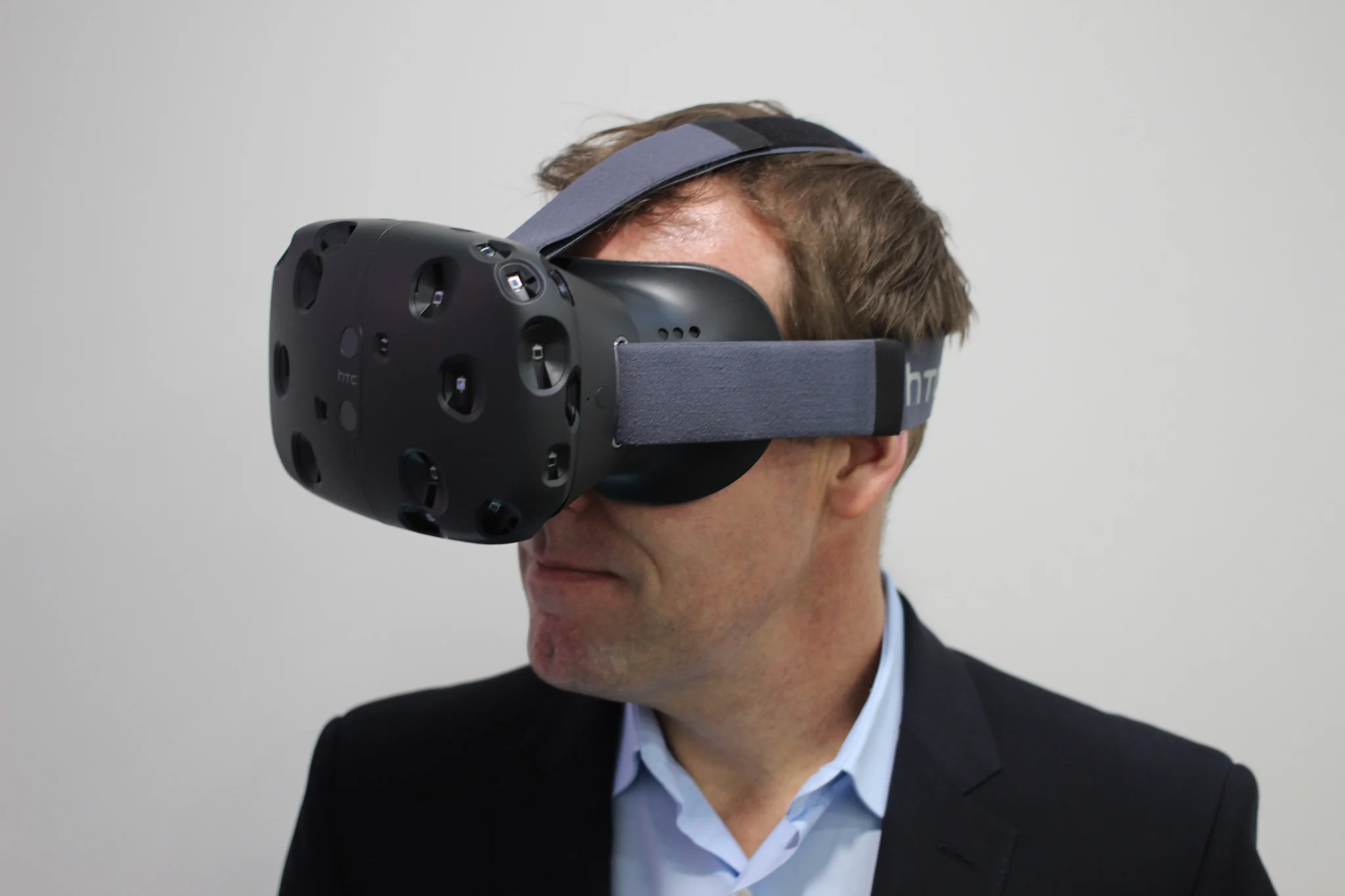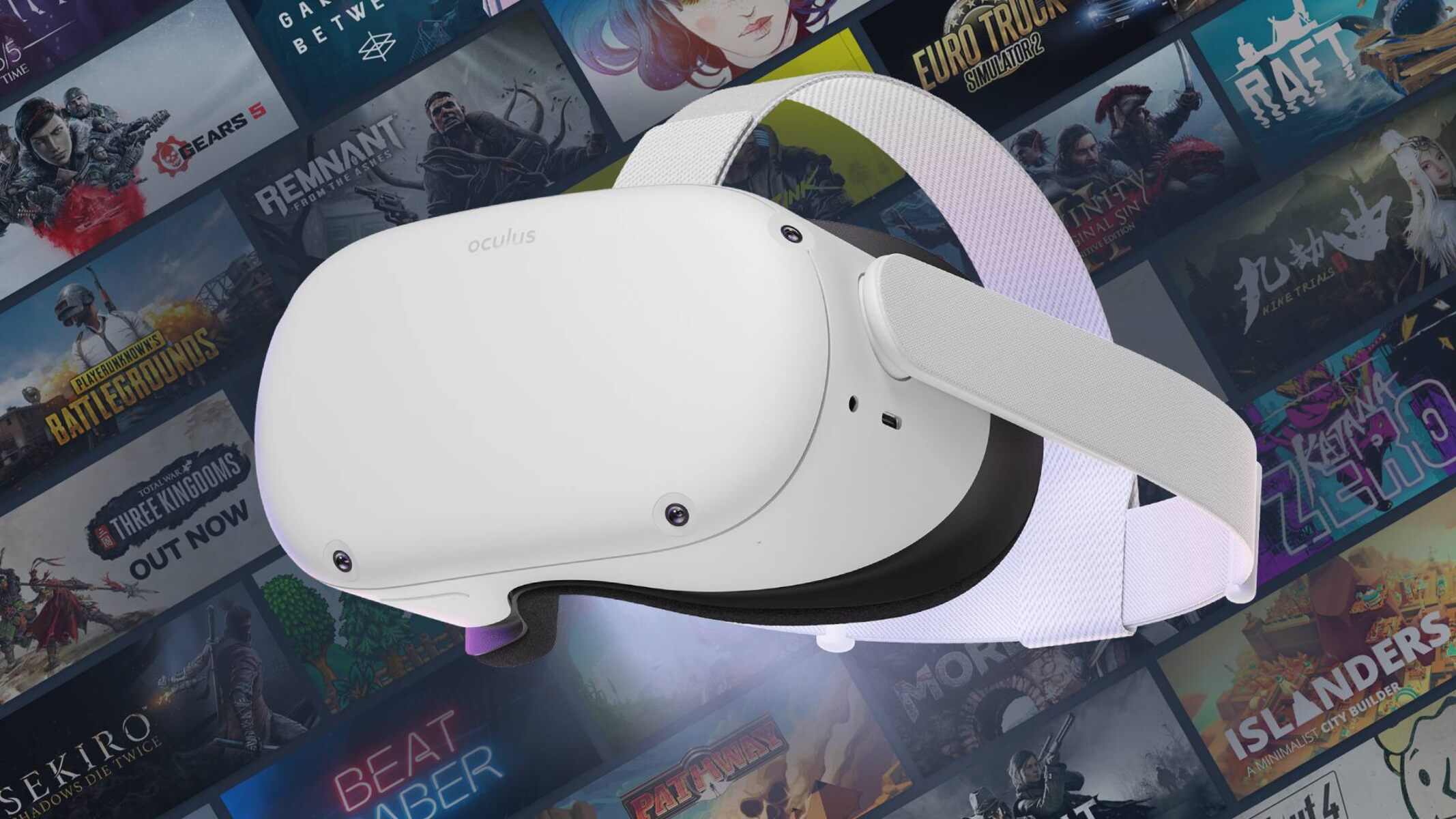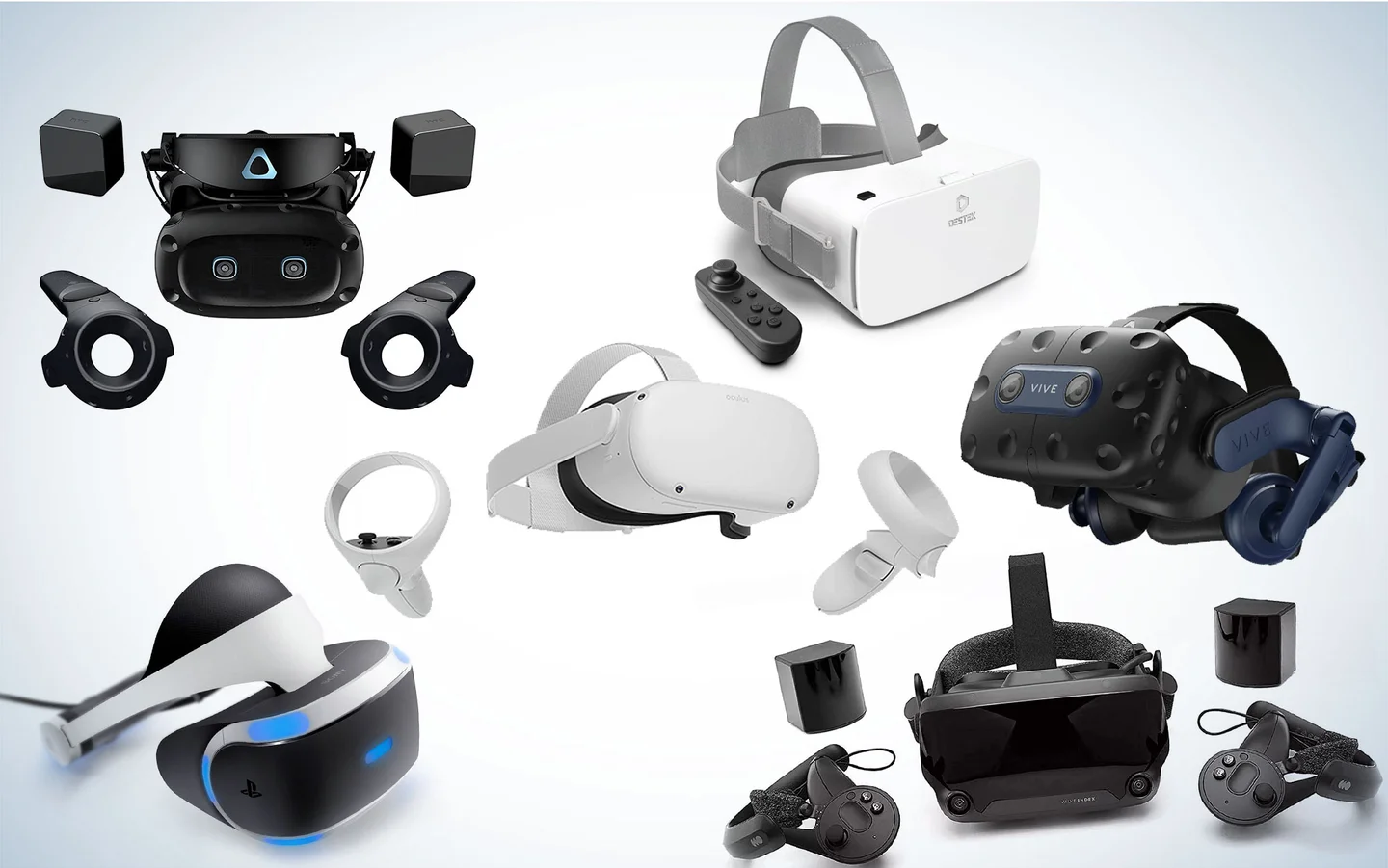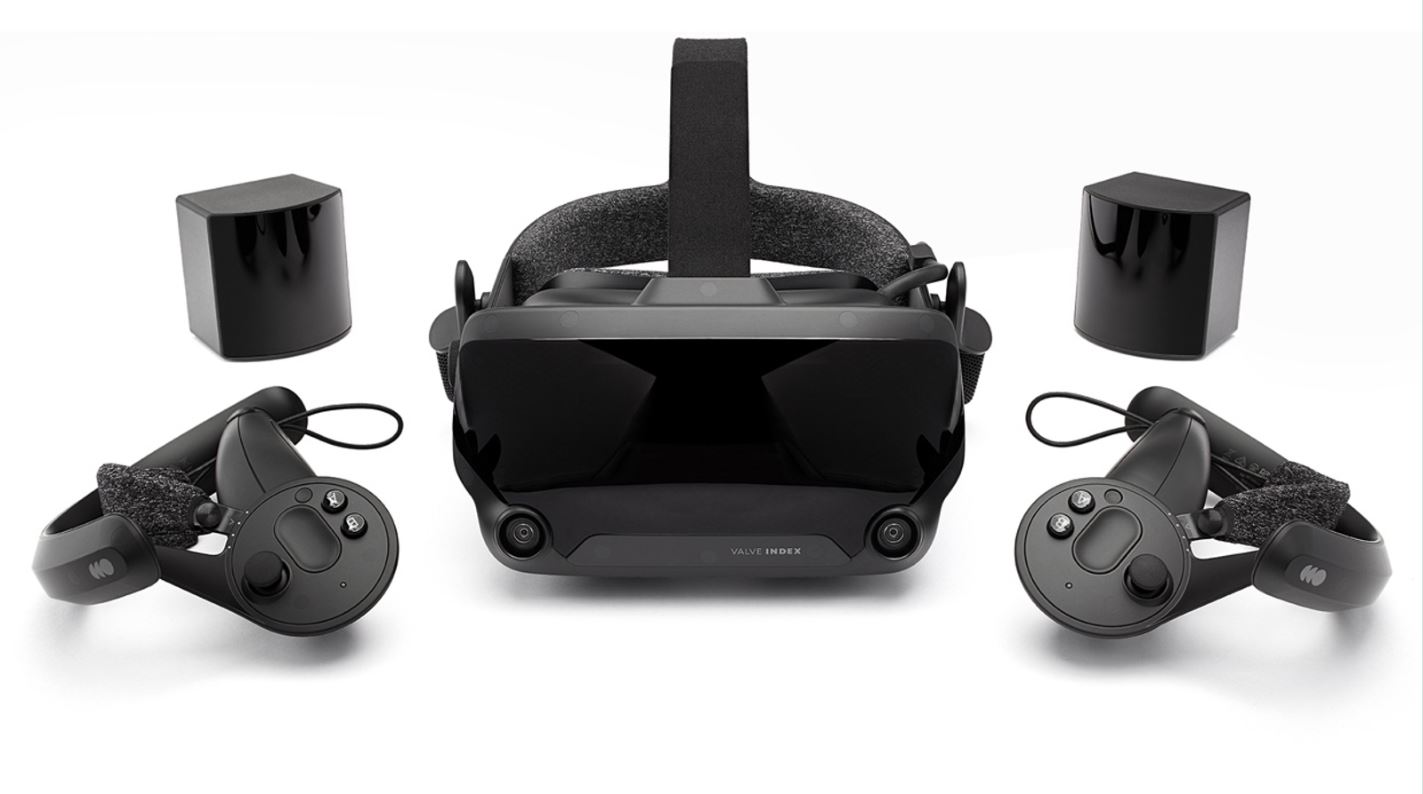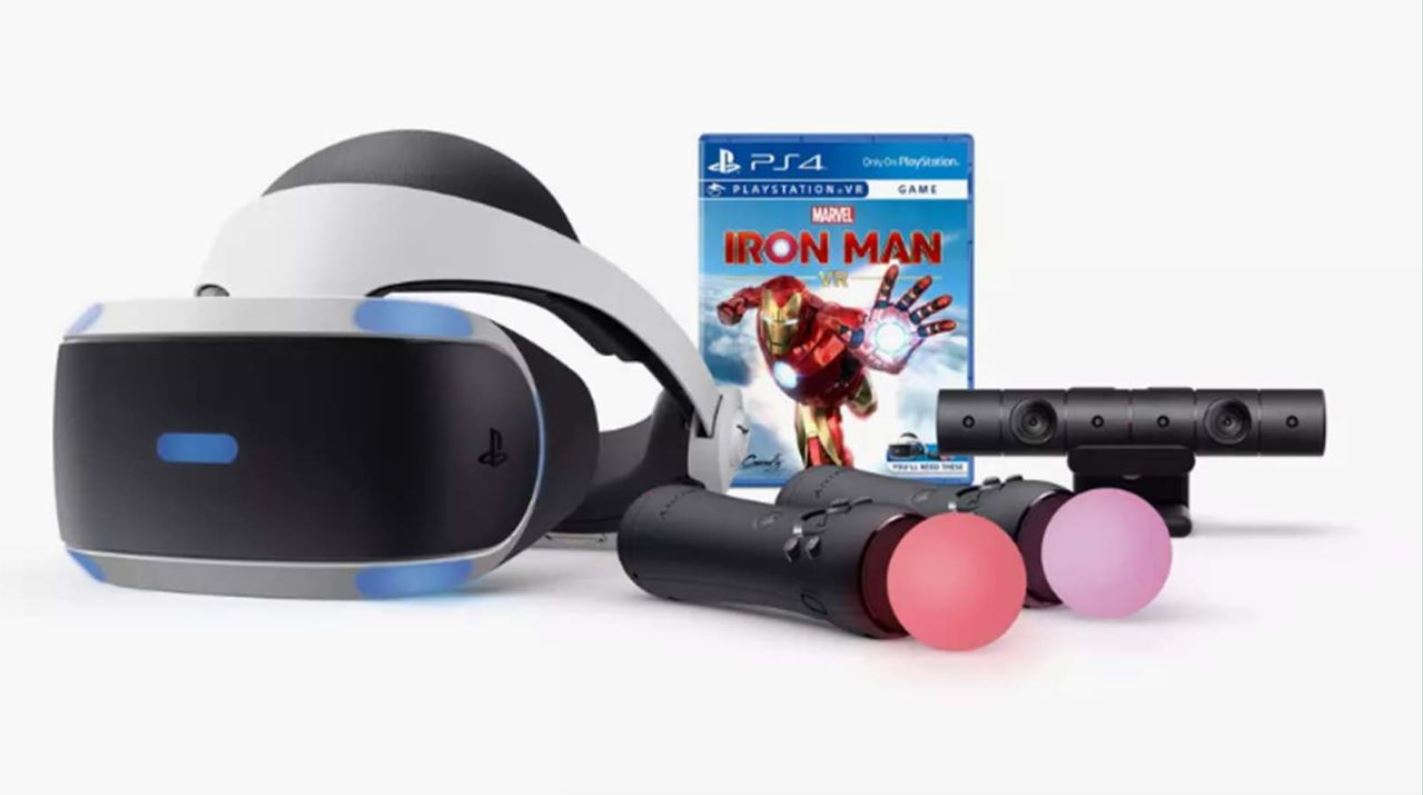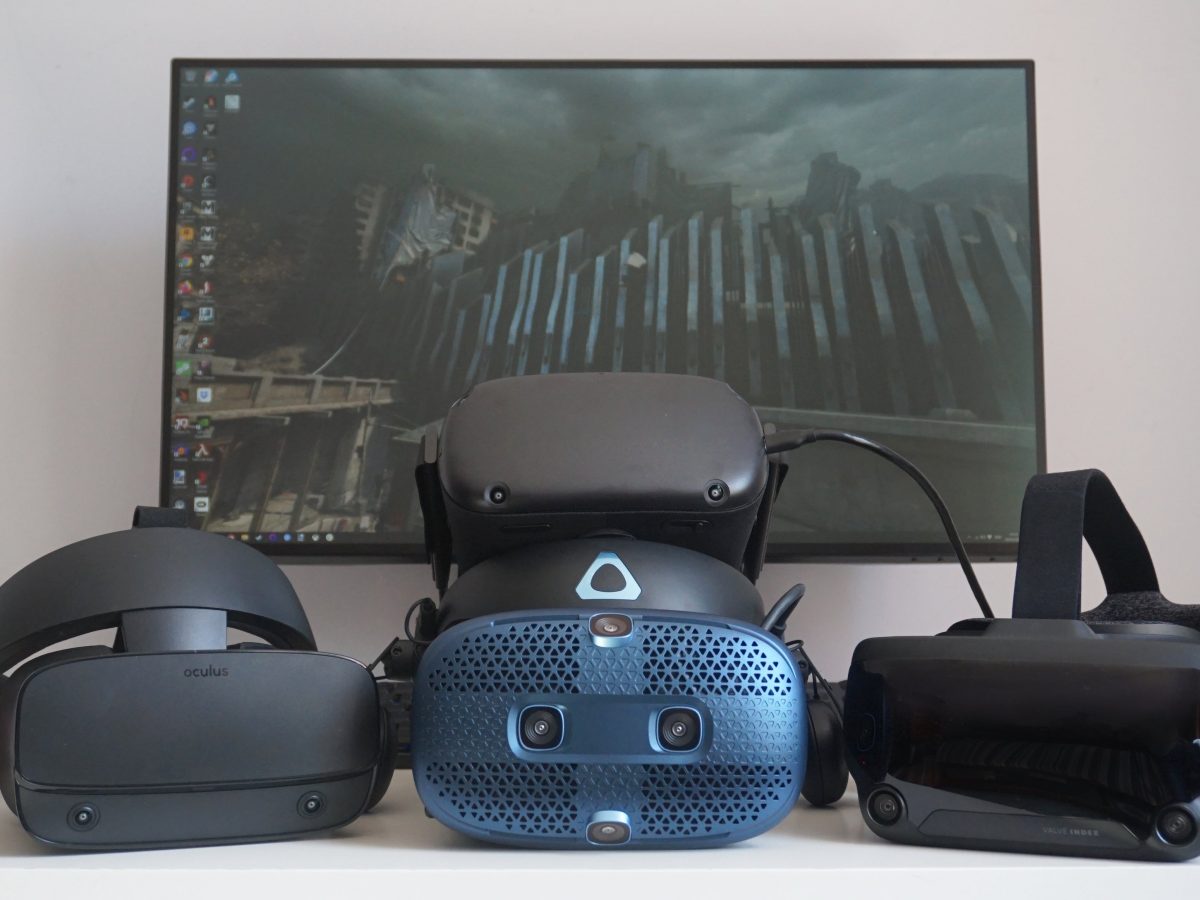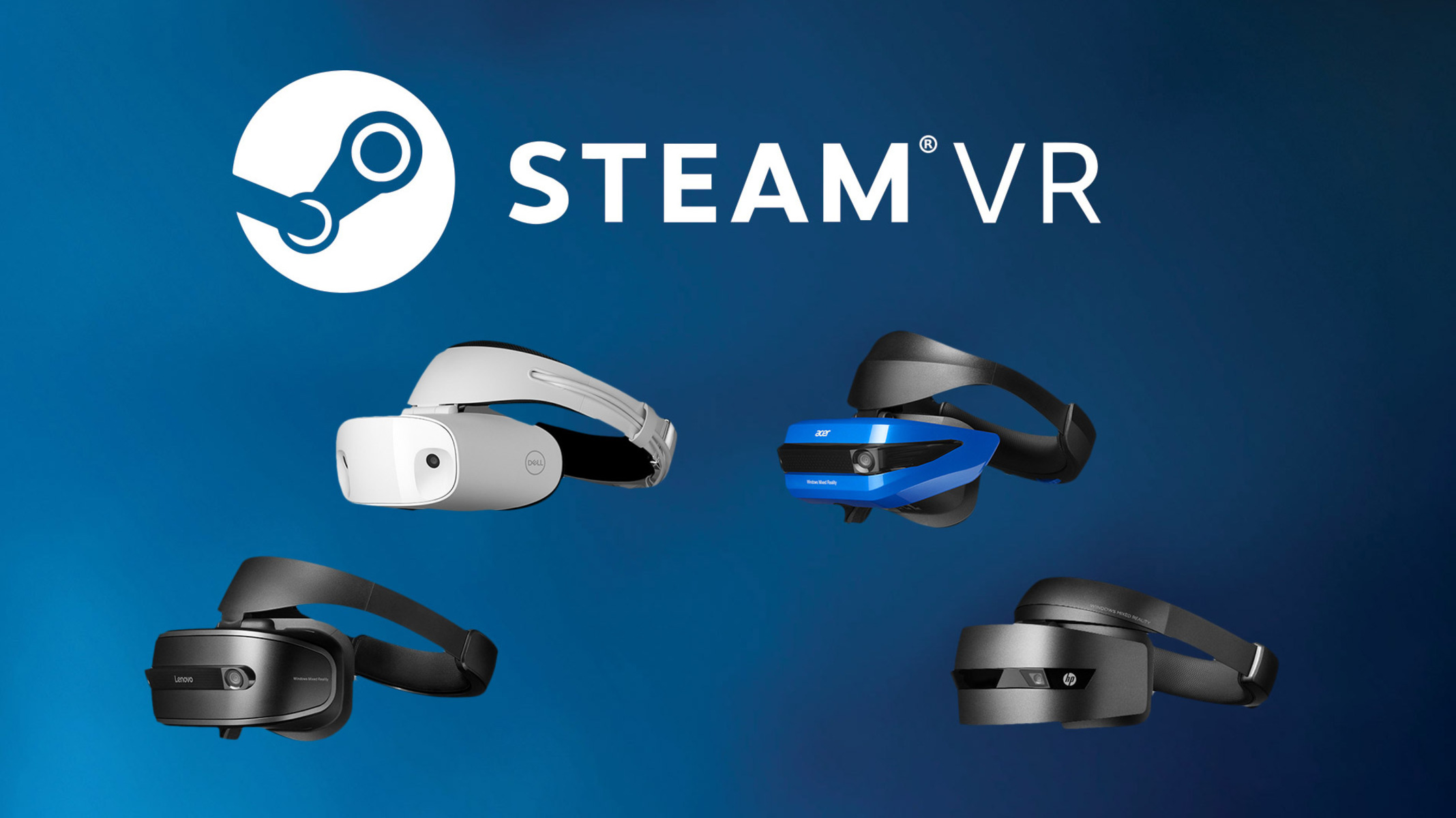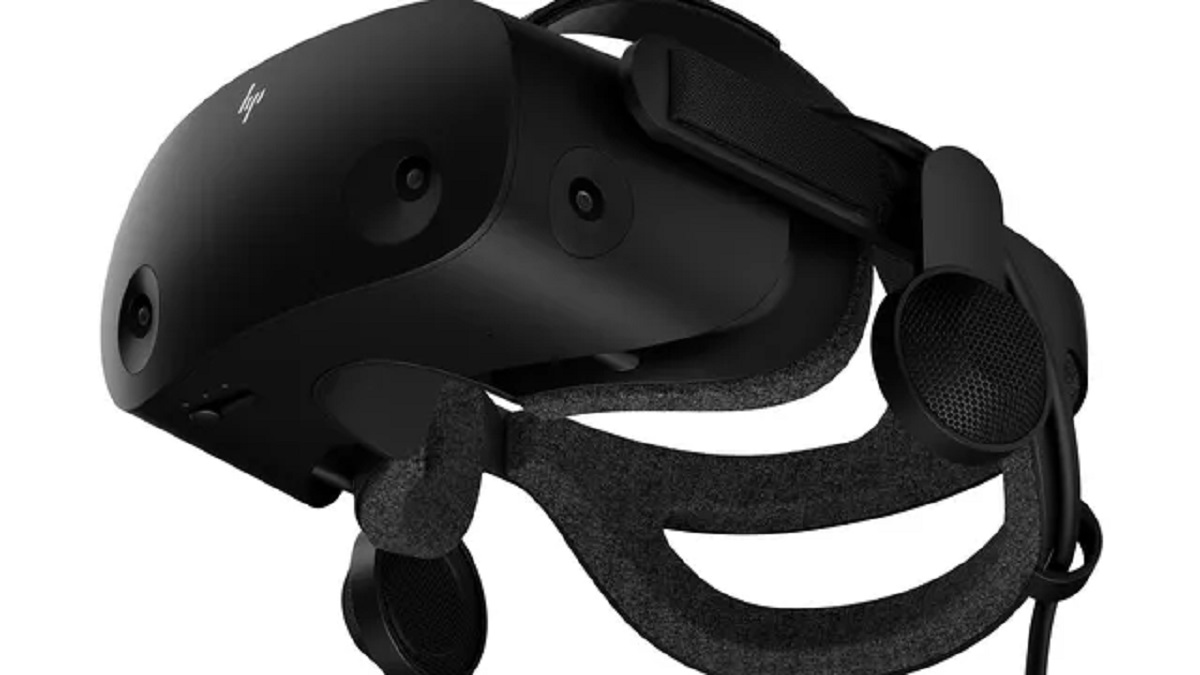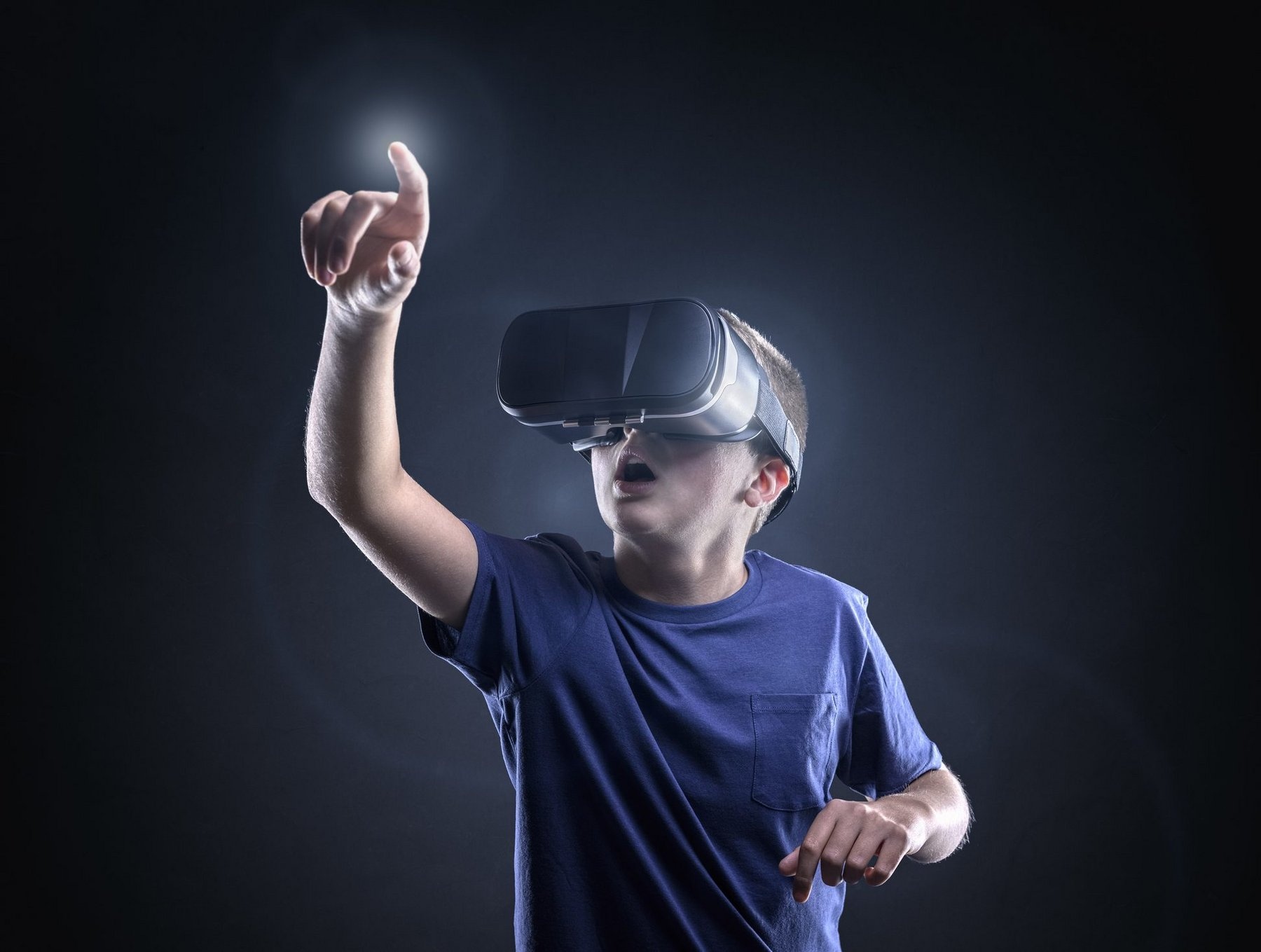Introduction
Virtual Reality (VR) headsets have revolutionized the way we experience digital content, offering immersive and interactive experiences that transport us to new virtual worlds. Whether you use a VR headset for gaming, educational purposes, or simply for entertainment, it’s important to ensure that you use it responsibly and in a way that promotes a healthy and enjoyable experience.
One of the key questions that arise when it comes to VR headset usage is how long one should spend wearing it. While there is no one-size-fits-all answer to this question, several factors need to be considered to determine the optimal duration for VR headset use. From your age and eye health to your tolerance for motion sickness and the comfortability of wearing the headset, these factors play a crucial role in ensuring a safe and enjoyable VR experience.
In this article, we will explore these factors in detail and provide some tips for a healthy VR headset experience. By understanding the importance of moderation and taking care of your well-being while using a VR headset, you can make the most out of this exciting technology without compromising your health.
Factors to Consider When Determining VR Headset Usage
When it comes to determining how long you should be on a VR headset, there are several important factors to take into consideration. These factors can help ensure that you have a safe and comfortable experience while using the headset. Let’s explore these factors in more detail:
- Age: The age of the user is an important factor to consider when determining VR headset usage. Young children may have a limited ability to tolerate VR experiences due to the potential impact on their developing vision and spatial awareness. Therefore, it is recommended to follow the age guidelines provided by the manufacturer or seek advice from healthcare professionals for young children.
- Eye Health: Another crucial factor to consider is your eye health. Extended periods of time wearing a VR headset can lead to eye strain and discomfort. It is important to take regular breaks during VR sessions to rest your eyes and prevent any potential long-term effects on your vision. Additionally, it is advisable to consult with an eye care professional if you have any pre-existing eye conditions before using a VR headset.
- Comfortability: The comfort of the VR headset plays a significant role in determining the duration of its usage. If the headset is uncomfortable or ill-fitting, it can lead to discomfort and even headaches or neck pain. It is important to adjust the straps and position of the headset to ensure a secure and comfortable fit. Taking breaks and removing the headset when necessary can also help alleviate any discomfort.
- Motion Sickness: Motion sickness is a common issue that some individuals may experience while using a VR headset. The level of susceptibility to motion sickness can vary from person to person. If you start feeling nauseous, dizzy, or unwell, it is essential to take a break and allow yourself to recover before resuming VR activities. Gradually increasing exposure to VR experiences may also help reduce the likelihood of motion sickness.
- Duration and Frequency of Usage: It is recommended to limit the duration of each VR session to avoid potential discomfort or adverse effects. Taking regular breaks, especially if you are experiencing any discomfort or fatigue, is essential for maintaining a healthy VR experience. Additionally, it is important to consider the frequency of VR headset usage to prevent overexposure.
By considering these factors and being mindful of your well-being while using a VR headset, you can ensure a safe and enjoyable experience. It is important to prioritize moderation and listen to your body’s signals to avoid any potential negative impacts on your health.
Age
When it comes to VR headset usage, age plays a crucial role in determining the optimal duration of use. While VR experiences can be captivating for both children and adults, it is important to consider the age guidelines provided by the manufacturer and seek advice from healthcare professionals when it comes to children.
Young children have developing vision and spatial awareness, and prolonged exposure to VR technology may have potential impacts. The American Academy of Pediatrics recommends avoiding the use of VR headsets for children under the age of 6 due to these developmental factors. For older children, it is essential to follow manufacturer recommendations and use parental discretion to ensure safe usage and an appropriate duration of VR experiences.
For adults, the impact of age on VR headset usage is primarily related to comfort and tolerance. Some individuals may find it more challenging to adapt to the immersive nature of VR experiences or may experience discomfort or disorientation. It is important to familiarize yourself with the VR headset’s features and controls and gradually increase exposure to build tolerance if you are new to VR technology.
Additionally, older adults, especially those with pre-existing medical conditions, should consult with healthcare professionals before using VR headsets. People with conditions such as epilepsy, heart disease, or other cardiovascular disorders may have specific restrictions or recommendations regarding the use of VR technology.
It is worth noting that age-related factors may vary among individuals, so it is important to be mindful of your own physical and mental well-being when using a VR headset. If you experience any discomfort, dizziness, or other adverse effects, it is important to take a break and consult with a healthcare professional if necessary.
By considering age guidelines, using parental discretion for younger users, and being aware of any personal limitations or conditions related to age, you can ensure that VR headset usage is safe and suitable for your age group.
Eye Health
When it comes to using VR headsets, taking care of your eye health is paramount. Extended use of VR technology can potentially strain your eyes and lead to discomfort or other eye-related issues. Therefore, it is important to be mindful of your eye health while using a VR headset.
One common concern related to VR headsets is the potential impact on visual development, especially for children and adolescents. Studies suggest that prolonged exposure to immersive virtual reality experiences, particularly in younger age groups, may have an influence on the development of visual processing and spatial awareness. To ensure the safety of their visual development, it is advisable for young children to limit their usage of VR headsets and follow age guidelines recommended by manufacturers and healthcare professionals.
For individuals with pre-existing eye conditions, it is essential to consult with an eye care professional before using a VR headset. Conditions such as amblyopia (lazy eye), strabismus (crossed eyes), or other vision impairments may affect how you perceive the virtual reality environment or may be exacerbated by the use of VR headsets. An eye care professional can provide guidance on whether using a VR headset is suitable for your specific condition and recommend any necessary precautions.
To minimize the risk of eye strain and discomfort, it is recommended to follow the 20-20-20 rule while using a VR headset. Every 20 minutes, take a 20-second break to look at an object approximately 20 feet away. This helps to alleviate eye fatigue and strain caused by the close proximity of the VR screen.
Another important consideration for eye health is the quality and resolution of the VR headset display. Higher-resolution displays with good pixel density provide a clearer and more comfortable viewing experience. Low-resolution displays or those with pixelation can strain your eyes and may detract from the overall VR experience. Therefore, when choosing a VR headset, it is advisable to select one with a high-quality display that prioritizes eye comfort.
Overall, by being mindful of your eye health, taking breaks, and seeking professional advice if needed, you can ensure a safe and enjoyable VR headset experience without compromising your eyesight.
Comfortability
Comfort is a crucial factor to consider when determining the duration of VR headset usage. Wearing a headset that is uncomfortable or ill-fitting can lead to discomfort, headaches, or even neck pain. Therefore, it is important to ensure that the VR headset is properly adjusted and fits securely on your head.
Most VR headsets come with adjustable straps that allow you to customize the fit according to the size and shape of your head. Make sure to tighten the straps snugly but not too tightly to avoid discomfort or pressure points. The headset should feel secure and balanced on your head, without being too loose or causing any excessive pressure on your face or neck.
Additionally, consider the weight distribution of the VR headset. Some headsets may feel heavier than others, which can contribute to discomfort during extended usage. If the headset feels too heavy or causes strain on your neck or shoulders, take frequent breaks to alleviate any discomfort and avoid prolonged periods of wearing the headset.
It is also advisable to take breaks when you start feeling any discomfort or fatigue. Listen to your body and give yourself a moment to rest and relax. Take off the headset, stretch your body, and take a few moments to refocus your vision and relieve any pressure on your face.
In addition to the physical comfort of the headset, consider the environmental factors as well. Make sure you are in a well-ventilated room to avoid overheating or feeling claustrophobic. If you feel too warm or confined while wearing the headset, it can detract from the overall comfort of the experience.
Lastly, keep in mind that everyone’s comfort level may vary. It is important to communicate any discomfort or issues with the headset to the manufacturer’s support team and seek their advice if necessary. They may be able to provide additional tips or solutions to enhance the comfort and fit of your VR headset.
By ensuring that your VR headset is properly adjusted, taking breaks when needed, and prioritizing your comfort, you can enjoy a more pleasant and immersive VR experience without any unnecessary discomfort or strain.
Motion Sickness
Motion sickness is a common concern for many individuals when using a VR headset. The immersive nature of virtual reality experiences can sometimes cause feelings of nausea, dizziness, or general discomfort. Understanding the factors that contribute to motion sickness and taking appropriate measures can help minimize its impact and ensure a more enjoyable VR experience.
One of the main causes of motion sickness in VR is a mismatch between the motion your body perceives and the visual cues presented in the virtual environment. This sensory conflict can trick your brain into thinking that you are moving when you are actually stationary, leading to feelings of motion sickness. Different people have varying levels of susceptibility to motion sickness, and it may take some time for your body to adjust to the new experience.
To reduce the likelihood of motion sickness, consider starting with less intense VR experiences and gradually increasing exposure over time. This allows your body to acclimate to the virtual environment and build tolerance. It is also important to take regular breaks during VR sessions, especially if you start feeling any discomfort or motion sickness symptoms. Stepping away from the headset and allowing yourself to rest can prevent the symptoms from worsening and help you recover faster.
Some VR applications and games offer comfort settings that can help alleviate motion sickness. These settings often include options to reduce or eliminate camera movement, adjust the field of view, or add comfort vignettes that restrict peripheral vision. Experimenting with these settings can make your VR experience more comfortable and reduce the risk of motion sickness.
Another technique to combat motion sickness is to focus on a stable object in the virtual environment. Instead of constantly scanning your surroundings, fixating your gaze on a stationary object can help provide a point of reference and reduce the sensory conflict that causes motion sickness.
It is worth noting that certain individuals may be more prone to motion sickness than others, and they may have different tolerance levels. If you consistently experience severe motion sickness symptoms, it is advisable to limit your VR sessions or consult with a healthcare professional for further guidance and recommendations.
By gradually introducing VR experiences, taking breaks, and making use of comfort settings, you can reduce the likelihood of motion sickness and enjoy a more pleasant and comfortable VR experience.
Duration and Frequency of Usage
Determining the appropriate duration and frequency of VR headset usage is crucial for maintaining a healthy and enjoyable experience. While there are no universally set time limits, it is important to find a balance that allows you to fully enjoy the VR technology without overexerting yourself or risking any adverse effects.
One key consideration is to limit the duration of each VR session. Prolonged use of a VR headset can lead to discomfort, eye strain, and fatigue. It is recommended to start with shorter sessions, typically around 10-15 minutes, and gradually increase the duration as you become more accustomed to the technology. However, if you begin experiencing any discomfort or fatigue, it is essential to take breaks and rest your eyes and body.
Taking regular breaks between VR sessions is equally important. Giving your eyes and mind time to rest and readjust to the real world can help prevent any potential long-term effects. Aim to take at least a 10-15 minute break after each VR session to allow your eyes to relax and recover.
The frequency of VR headset usage is another factor to consider. Using a VR headset excessively, without giving yourself adequate time to rest and recover, can increase the risk of eye strain, fatigue, and other potential health issues. It is recommended to establish a balanced routine and avoid consecutive, prolonged usage to give your body and mind the opportunity to recover fully.
It is also important to listen to your body and be aware of any signs of discomfort, eye strain, or motion sickness. If you notice any adverse effects during or after VR sessions, reduce the duration or frequency of usage accordingly. Everyone’s tolerance and physical responses may vary, so it is crucial to pay attention to how your body reacts and adjust your VR usage accordingly.
Additionally, it is essential to maintain an overall healthy lifestyle and incorporate other recreational activities alongside VR usage. Engaging in physical exercise, getting regular sleep, and spending time in natural light are all important for your overall well-being and can help mitigate any potential negative effects of VR usage.
By setting reasonable time limits, taking regular breaks, and paying attention to your body’s signals, you can ensure a healthy and enjoyable VR headset experience without any unnecessary risks or concerns.
Tips for a Healthy VR Headset Experience
To ensure a safe and comfortable VR headset experience, it is important to follow some useful tips that can enhance your overall well-being and enjoyment. These tips will help you make the most out of your VR sessions while minimizing any potential risks or discomforts.
- Adjust the headset properly: Make sure to adjust the VR headset to fit securely on your head. This will not only enhance comfort but also prevent any distractions or interruptions during your VR experience.
- Take regular breaks: Remember to take breaks during your VR sessions to rest your eyes and avoid eye strain. Use the 20-20-20 rule, where every 20 minutes, look at an object approximately 20 feet away for about 20 seconds to give your eyes a break.
- Start with shorter sessions: If you are new to VR technology, start with shorter VR sessions and gradually increase the duration as you become more comfortable. This allows your body to adapt to the immersive nature of VR experiences.
- Set a time limit: Establish a reasonable time limit for each VR session to prevent excessive usage. This helps avoid fatigue, discomfort, and potential adverse effects.
- Choose appropriate content: Be mindful of the content you choose to experience in VR. Some experiences may be more intense or visually stimulating than others. Start with content that is suitable for your age and comfort level.
- Stay hydrated: It is important to stay hydrated during VR sessions, especially if you are engaged in physical activities or games. Take regular water breaks to maintain your overall well-being.
- Maintain a clean headset: Keep your VR headset clean and free from dirt and smudges. Regularly wipe the lenses and surfaces with a soft, dry cloth to ensure optimal visual quality and prevent any potential discomfort.
- Follow manufacturer guidelines: Familiarize yourself with the manufacturer’s guidelines and recommendations for your specific VR headset. Adhering to these guidelines ensures proper usage and helps prevent any potential risks or technical issues.
- Seek professional advice if needed: If you have any concerns about your VR headset usage or experience any persistent discomfort or adverse effects, it is always advisable to seek guidance from healthcare professionals or the manufacturer’s support team.
By following these tips, you can have a healthier and more enjoyable VR headset experience. Remember to prioritize your well-being, listen to your body, and take the necessary precautions to ensure a safe and comfortable VR journey.
Conclusion
Using a VR headset can be an incredibly immersive and captivating experience. However, it is essential to prioritize your well-being and use the technology responsibly. By considering factors such as age, eye health, comfortability, motion sickness, and duration/frequency of usage, you can ensure a safe and enjoyable VR headset experience.
It is crucial to follow age guidelines and seek advice from healthcare professionals when it comes to children and VR headset usage. For adults, taking care of your eye health and comfort plays a key role in determining the duration of VR sessions. Remember to adjust the headset properly, take breaks, and be aware of any potential motion sickness symptoms.
Additionally, setting reasonable time limits and maintaining a balanced routine that includes other activities outside of VR is crucial for your overall well-being. By incorporating tips like adjusting the headset properly, taking breaks, choosing appropriate content, and following manufacturer guidelines, you can ensure a healthy and enjoyable experience.
Ultimately, the goal is to strike a balance between immersing yourself in the virtual world and maintaining a connection with the real world. By being mindful of your personal limits, listening to your body, and seeking professional advice when needed, you can make the most out of your VR headset experience while safeguarding your health.
VR technology continues to evolve, and as it becomes more accessible to a wider audience, it is important to keep up with the latest research, safety guidelines, and recommendations. Stay informed and enjoy the incredible possibilities that VR technology offers, knowing that you are taking the necessary steps to prioritize your well-being while delving into the virtual realm.







